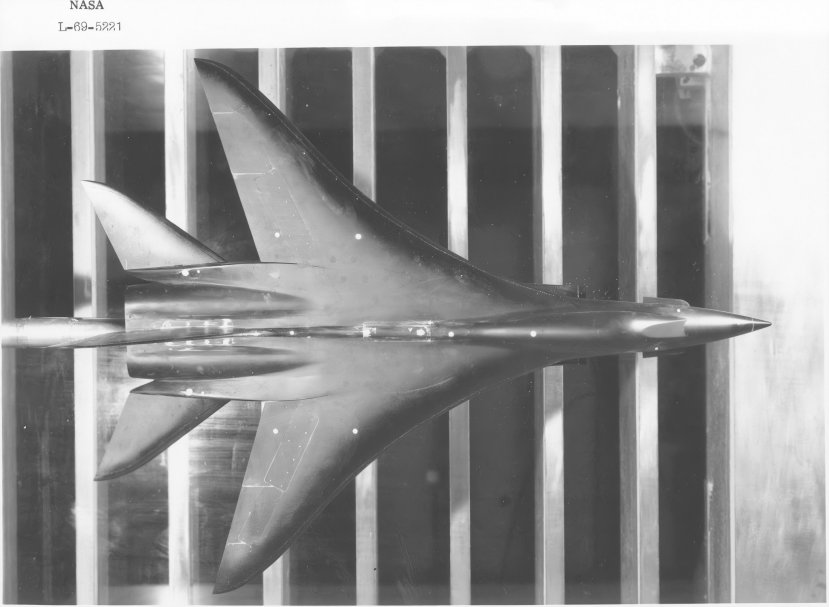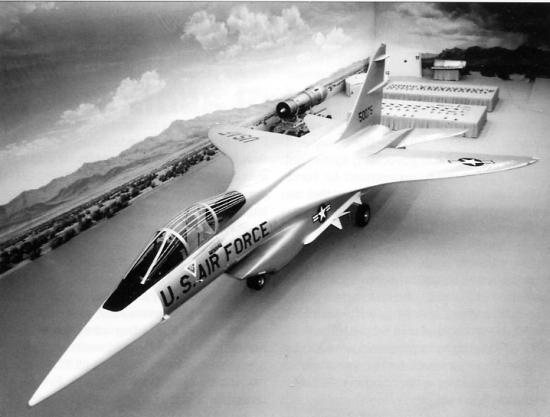The F-15 that never was: The North American NA-335

The USAF 1960s programme that led to the F-15 was won by McDonnell Douglas, but other fighter design houses had offered rival concepts. The most exciting of these unsuccessful designs was offered by North American, and was designated NA-335. In many ways its configuration resembled the later Sukhoi T-10. The Sukhoi T-10, after much modification, became the now ubiquitous ‘Flanker’ series. The American design differed in two significant ways: it lacked the gap between the engine nacelles, and it had only a single vertical fin.

The ventral gully produces complicated airflows and can offer some separation issues for air-launched weapons, but it does allow the rear fuselage to add significantly to overall lifting area contributing to the fighter’s performance. The 335’s single-tail (backed up by large ventral fins) would have made the aircraft inferior to a twin-tailed aircraft like the F-15 in controllability at high alpha, but it would have been lighter and simpler. However, the ‘335s significant leading edge roots would have aided its ability to generate high alpha angles. Even with folding, it is harder to see how the large ventral fins would not necessitate a very tall stalky undercarriage.

The sabre-shaped wings are particularly interesting – they feature similar wingtip curvature to the T-10, potentially causing issues at high transonic speeds and ruling out the use of tip-mounted missiles.

Keep this blog alive!

To keep this blog going- allowing us to create new articles- we need donations. We’re trying to do something different with Hush-Kit: give aviation fans something that is both entertaining, surprising and well-informed. Please do help us and click on the donate button above – you can really make a difference (suggested donation £10). You will keep us impartial and without advertisers – and allow us to carry on being naughty.

What was the most combat effective piston-engined fighter ever made? An analysis can be found here.

North American proposed a similar design for the nascent F-14 requirement.
The Hush-Kit Book of Warplanes is incredible, come and check out its reviews here.
Follow my vapour trail on Twitter: @Hush_kit



Talk about just in time , I was commenting in the archives just the other day about the NA 335 and its cousin for what became the F-14 program, the NA-323. NA also had some preliminary designs for FX that were similar to MDD F15 but with a swing wing.
Regarding the under fuselage fins, its likely that development would have switched to twin tails and residual fins. I understand it was only on the industrial side of the bid that led to NAA lose out, as they required a new plant ( which they did get for the B-1 at Palmdale) while MDD would just use the Phantom plant at St Louis.
Sukhoi were supposed to be glad that MDD won too as they knew they were onto a winner with that wing configuration for the early Su27. History has shown they certainly could get a lot of different versions of the same basic design and the most recent version Su 35S was still very competitive.
Like the painted photo backdrop and table cloths in the second image.
As a young aerodynamics engineer fresh out of graduate school, I worked for NAA and assisted the experienced NAA design engineers in evaluating the NA 335 design efforts. We were told by the Air Force brass that the NAA design was the best and that we had won the RFP competition. Therefore it was a huge shock when the announcement was made in late December 1969 that MD had won. We later learned it was a decision driven by politics. NAA’s NA 335 design was very advanced for 1969 being a psuedo-stealthy blended wing-body concept that resembled the future Lockheed F-22 and F-35 designs!
Source for this was my forum:
https://www.secretprojects.co.uk/threads/north-american-rockwell-na-335-fighter-project-to-usaf-fx-requirement.519/
I would love to see designs that didn’t get selected but yet are beautiful aircraft. Please keep up the good work.
Very cool and informative article. I really liked it! I wanted to be an aviation concept artist a Ling time ago. Real Ralph Macquarie type stuff. He was an illustrator for Boeing before he did the concept art for the first Star Wars movie he was famous for. This kind of stuff has always has peaked my aviation interests .